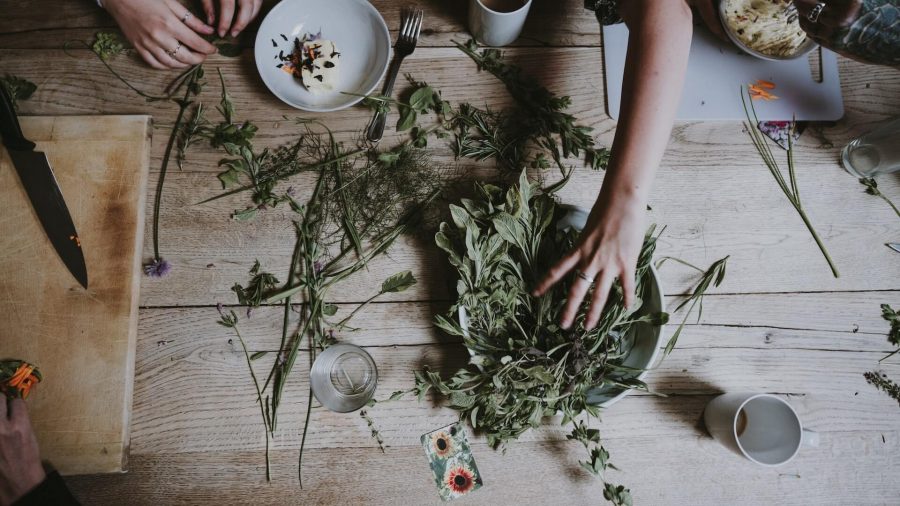In the age of farm-to-table dining and the desire for fresher, more sustainable ingredients, there’s no better way to elevate your culinary adventures than by creating a DIY herb garden indoors. Whether you’re a seasoned gardener or a newbie with a green thumb, cultivating your own herbs at home can be a rewarding and sustainable endeavor. This in-depth article will guide you through the steps, tips, and tricks to create a thriving indoor herb garden that not only adds flavor to your dishes but also enhances the ambiance of your home.
The Benefits of a DIY Herb Garden
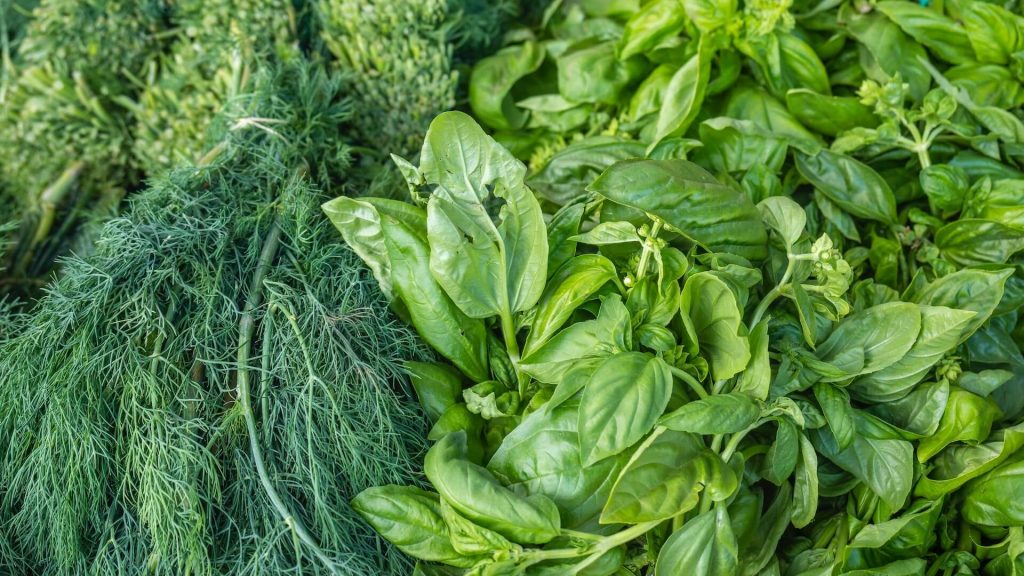
Before we dive into the nitty-gritty of starting your indoor herb garden, let’s explore the numerous benefits it brings to your life and living space.
Fresh, Organic Flavors at Your Fingertips
Imagine garnishing your favorite dishes with freshly plucked basil, oregano, or mint. With your own DIY herb garden, you’ll have a continuous supply of organic, pesticide-free herbs right at your fingertips. No need for last-minute grocery store runs! Freshly harvested herbs contain a higher concentration of essential oils and are bursting with flavor, elevating your culinary creations to new heights.
Aesthetic Appeal
Herb gardens add a touch of greenery and fragrance to your living space, transforming it into a haven of beauty and aromatics. The lush, vibrant green leaves and delicate fragrances create an atmosphere of tranquility. You’ll find that having an indoor herb garden not only pleases your palate but also soothes your soul.
Environmental Sustainability
Growing your own herbs reduces your carbon footprint and contributes to a more sustainable lifestyle. By sourcing your herbs from your very own indoor garden, you eliminate the need for long transportation and the excessive packaging that often comes with store-bought herbs. You’ll be making a tangible and positive impact on the environment.
Choosing the Right Location
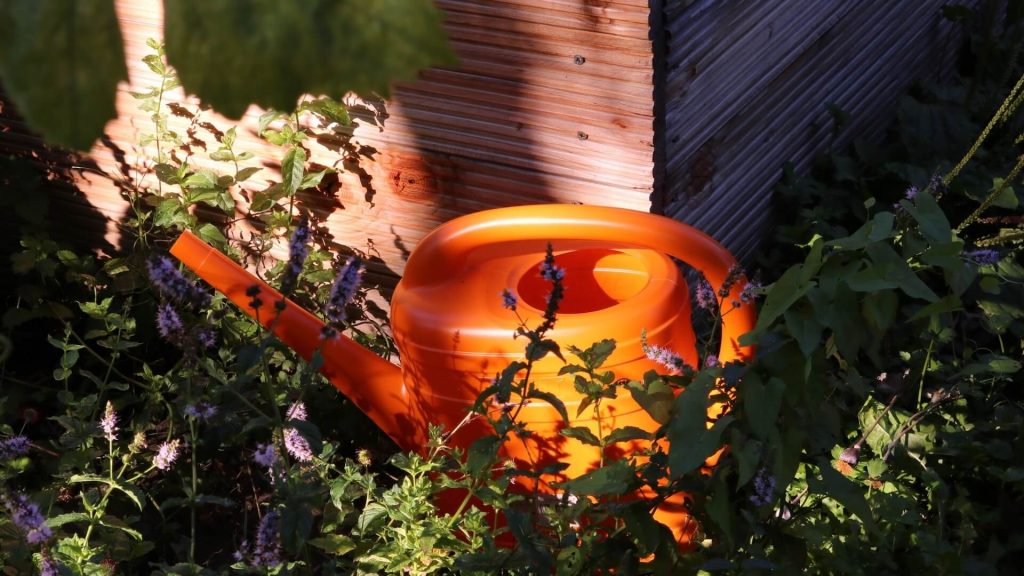
The success of your DIY herb garden largely depends on the location you choose. Herbs have specific requirements that must be met for optimal growth. Here’s how to select the right spot.
Sunlight
Most herbs need plenty of sunlight to thrive. Place your indoor garden in a location that receives at least 6 hours of direct sunlight per day. South or southwest-facing windows are often ideal, but if you lack sufficient natural light, consider using artificial grow lights. These specialized lights mimic the spectrum of natural sunlight and can ensure your herbs receive the light they need to flourish, even in windowless spaces.
Temperature
Herbs prefer a consistent temperature between 60-70°F (15-24°C). Avoid placing your garden near radiators, heating vents, or drafty windows that can subject your herbs to temperature extremes. Maintaining an optimal temperature is essential for healthy growth.
Humidity
Indoor environments can be dry, which is not ideal for herbs. To boost humidity, mist your plants regularly or place a tray of water near the garden. This will help maintain the moisture level your herbs crave, promoting robust and vibrant growth.
Selecting the Right Herbs
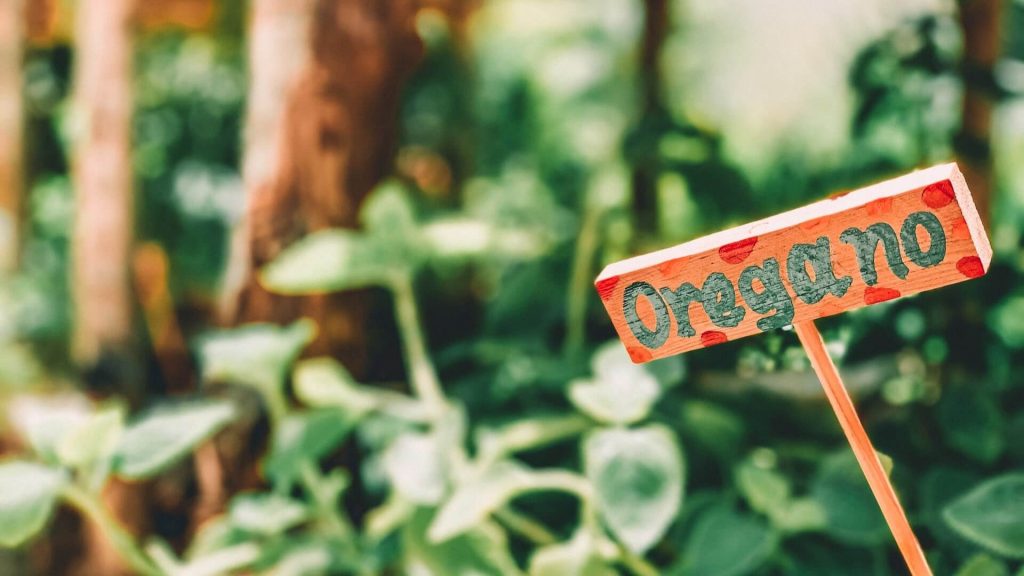
Not all herbs are created equal when it comes to indoor gardening. Some are better suited for this environment than others. Here are some popular choices:
Basil
Basil is a fantastic choice for indoor gardens. It’s not only easy to grow but also adds a burst of fresh flavor to pasta, salads, and a wide range of other dishes. There are various basil varieties available, such as sweet basil, Thai basil, and lemon basil, each with its unique flavor profile.
Mint
Mint is another low-maintenance herb that thrives indoors. It’s perfect for brewing refreshing teas, crafting cocktails, or adding a delightful twist to desserts. Varieties like peppermint, spearmint, and chocolate mint offer distinct flavors and aromas.
Chives
Chives are hardy and can grow in small pots, making them an excellent choice for indoor gardening. Their mild onion flavor makes them a versatile addition to various dishes, from soups and omelets to baked potatoes.
Oregano
Oregano is a staple in Mediterranean and Italian cuisine. It requires minimal care and rewards you with bold, aromatic leaves that are ideal for seasoning pizzas, pasta sauces, and grilled meats. Greek oregano and Italian oregano are popular varieties to consider.
Parsley
Parsley is an excellent herb to grow indoors. It complements a wide range of dishes and is easy to manage. Flat-leaf parsley and curly parsley are two common varieties, each offering a slightly different flavor and appearance.
Containers and Soil
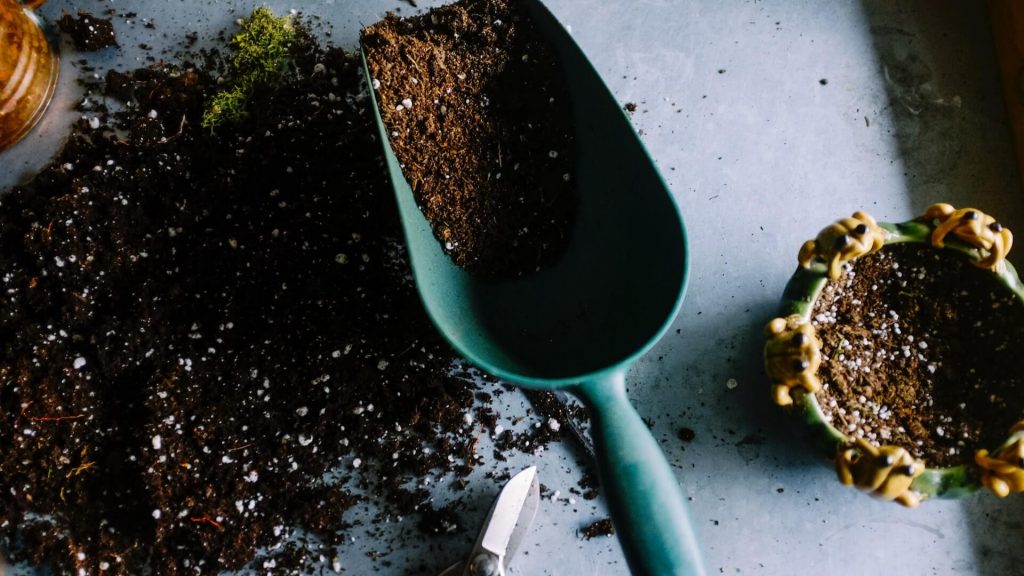
Selecting the right containers and soil is essential to ensure your herbs flourish.
Containers
Choose pots or containers with good drainage to prevent overwatering. Make sure they have saucers to catch excess water. Herbs can be grown in various containers, from traditional clay pots to upcycled mason jars, as long as they are the right size for your chosen herbs. Be creative with your choices, but ensure that the containers are clean and provide adequate space for root growth.
Soil
Select a high-quality potting mix that provides good drainage. Herb-specific potting mixes are available, but a standard mix can work if you improve drainage by adding sand or perlite. Adequate drainage is crucial to prevent waterlogged roots, which can lead to root rot and other problems.
Planting and Care
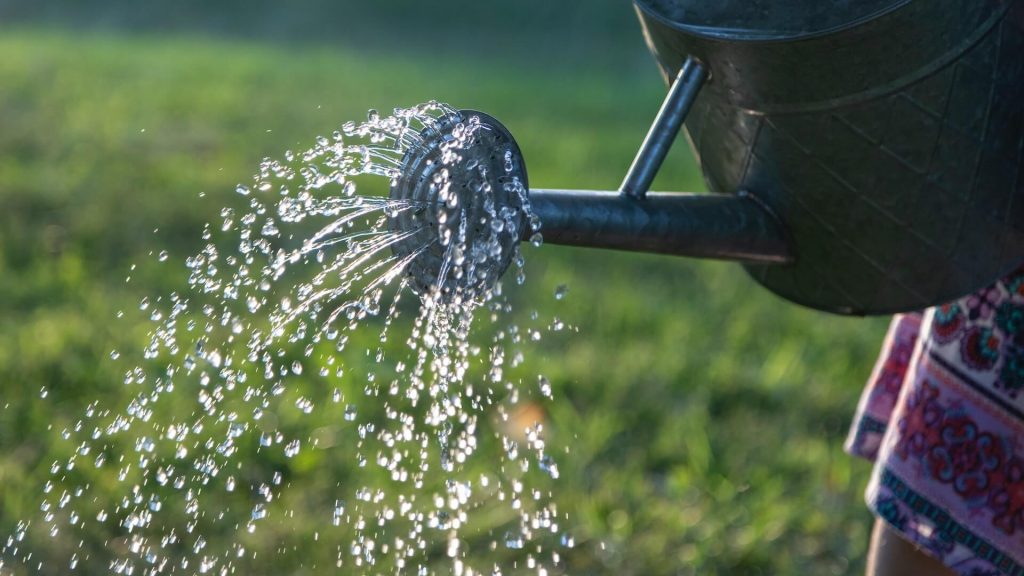
Now that you have your location, herbs, containers, and soil ready, it’s time to get your hands dirty and start planting.
Planting
Fill your chosen container with the potting mix, leaving about an inch of space at the top. Gently remove your herb from its nursery pot and plant it at the same depth it was before. Water thoroughly after planting to help settle the soil around the roots and provide a stable start for your herbs. This step ensures that the plant has adequate moisture to kickstart its growth in the new container.
Watering
Herbs don’t like sitting in waterlogged soil, so it’s crucial to find the right balance. Water your plants when the top inch of soil feels dry, but avoid overwatering. The best way to water is to add water until it starts to drain from the bottom, ensuring the roots receive the necessary moisture. Use a saucer beneath the pot to catch any excess water, preventing it from accumulating and potentially causing root issues.
Pruning
Regularly prune your herbs to encourage new growth and maintain a bushy appearance. Use kitchen shears or sharp scissors to snip off the tops of stems to prevent flowering and seed production. Pruning also helps the plant allocate its energy toward producing fresh, flavorful leaves rather than seeds.
Fertilizing
Herbs typically don’t require heavy fertilization, but they do benefit from periodic nutrient boosts. Use a balanced, water-soluble fertilizer at half-strength every 4-6 weeks during the growing season. This additional nourishment ensures that your herbs have the essential nutrients they need to thrive and produce abundant leaves.
Common Issues and Troubleshooting
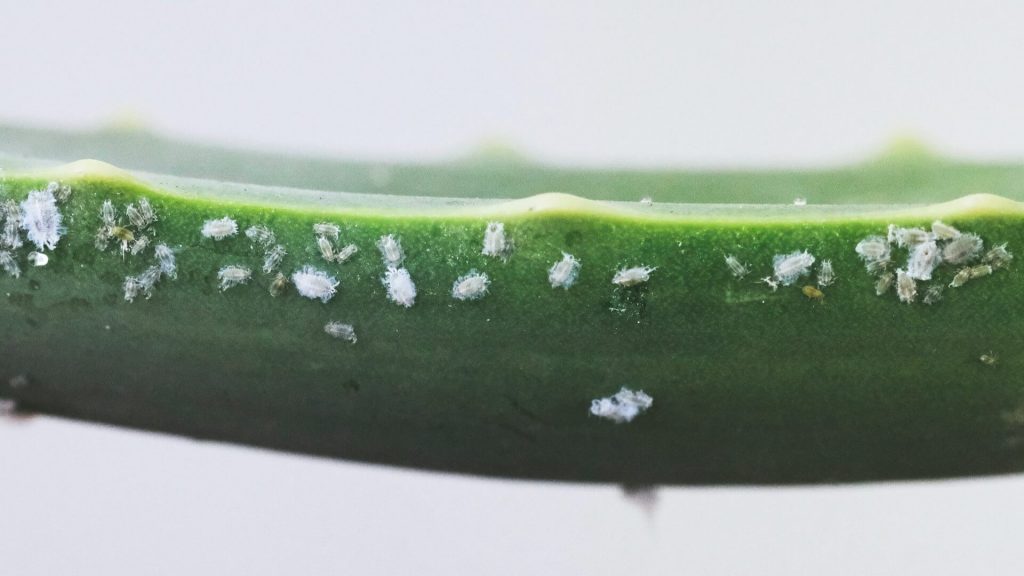
Like any gardening endeavor, indoor herb gardens can face challenges. Here’s how to handle some common issues:
Pests
Keep an eye out for common pests like aphids, spider mites, and mealybugs, which can plague your indoor herb garden. To combat these unwanted visitors, try spraying your herbs with a mixture of water and a few drops of mild dish soap. This solution will help suffocate the pests and keep your herbs free from infestations.
Diseases
Fungal diseases, such as powdery mildew, can affect indoor herbs due to the relatively humid indoor environment. To prevent and manage diseases, ensure proper air circulation around your plants by providing enough space between them. Avoid overwatering, which can create conditions for fungal growth. If you notice signs of disease, remove affected leaves promptly to prevent it from spreading to the entire plant.
Leggy Growth
Leggy growth can occur when herbs stretch towards light sources. To prevent this, rotate your containers regularly, so each side of the plant receives an equal share of sunlight. If natural light is inadequate, consider using grow lights to ensure even growth. Proper lighting not only discourages leggy growth but also promotes compact and bushy herbs.
Harvesting and Using Your Herbs

One of the most satisfying aspects of having a DIY herb garden is the joy of harvesting and using your fresh herbs in your culinary creations.
Harvesting
Harvest your herbs when they are mature and lush, typically once they have developed several sets of leaves. Use sharp scissors or pruning shears to snip the leaves or stems, and be sure not to remove more than one-third of the plant at once. Harvesting encourages new growth and ensures a steady supply of fresh herbs throughout the growing season.
Using Fresh Herbs
The flavor of fresh herbs is unmatched, and they can elevate your culinary creations to a whole new level. Here are some ideas for using your freshly harvested herbs:
- Basil:
Add it to homemade pesto, caprese salads, or use it as a flavorful garnish for pizza. - Mint:
Brew it into refreshing teas, use it to make mojitos, or add it to fruit salads for a burst of freshness. - Chives:
Enhance the flavor of omelets, baked potatoes, and cream cheese spreads. - Oregano:
Season your favorite pasta dishes, soups, and roasted vegetables. - Parsley:
Sprinkle it on top of grilled meats, fish, or use it in tabbouleh and chimichurri sauces.
Get creative with your cooking and experiment with different herb combinations to discover new and exciting flavor profiles.
DIY Herb Garden
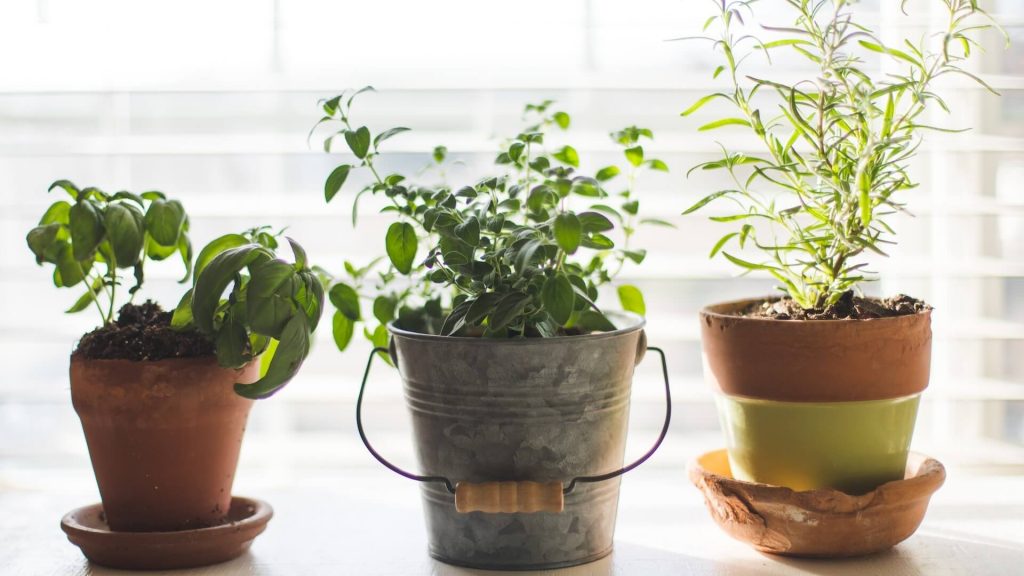
Your DIY herb garden is not just a source of fresh ingredients; it’s also a delightful addition to your home’s aesthetic. The lush greenery and aromatic scents it provides can transform your living space into a cozy sanctuary. Consider placing your herb garden in decorative pots or planters that complement your interior decor. The visual appeal of the garden enhances the ambiance of your home, making it a welcoming and tranquil place to spend time.
Conclusion
Creating a DIY herb garden indoors is a gratifying journey that brings freshness, sustainability, and a touch of nature into your home. By carefully choosing the right location, herbs, containers, soil, and giving them the love and care they need, you’ll have a thriving garden that will enhance your cooking and your surroundings. Embark on this journey to discover the joys of homegrown herbs and the countless ways they can elevate your culinary and aesthetic experiences. An indoor herb garden is not just a DIY project; it’s a lifestyle choice that promises flavor, fragrance, and a connection to the natural world, all within the comfort of your home.
